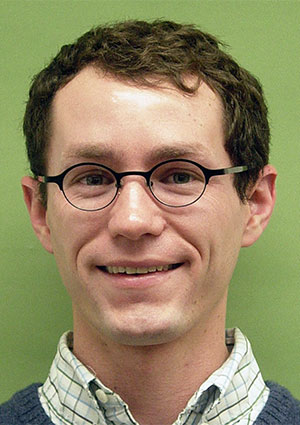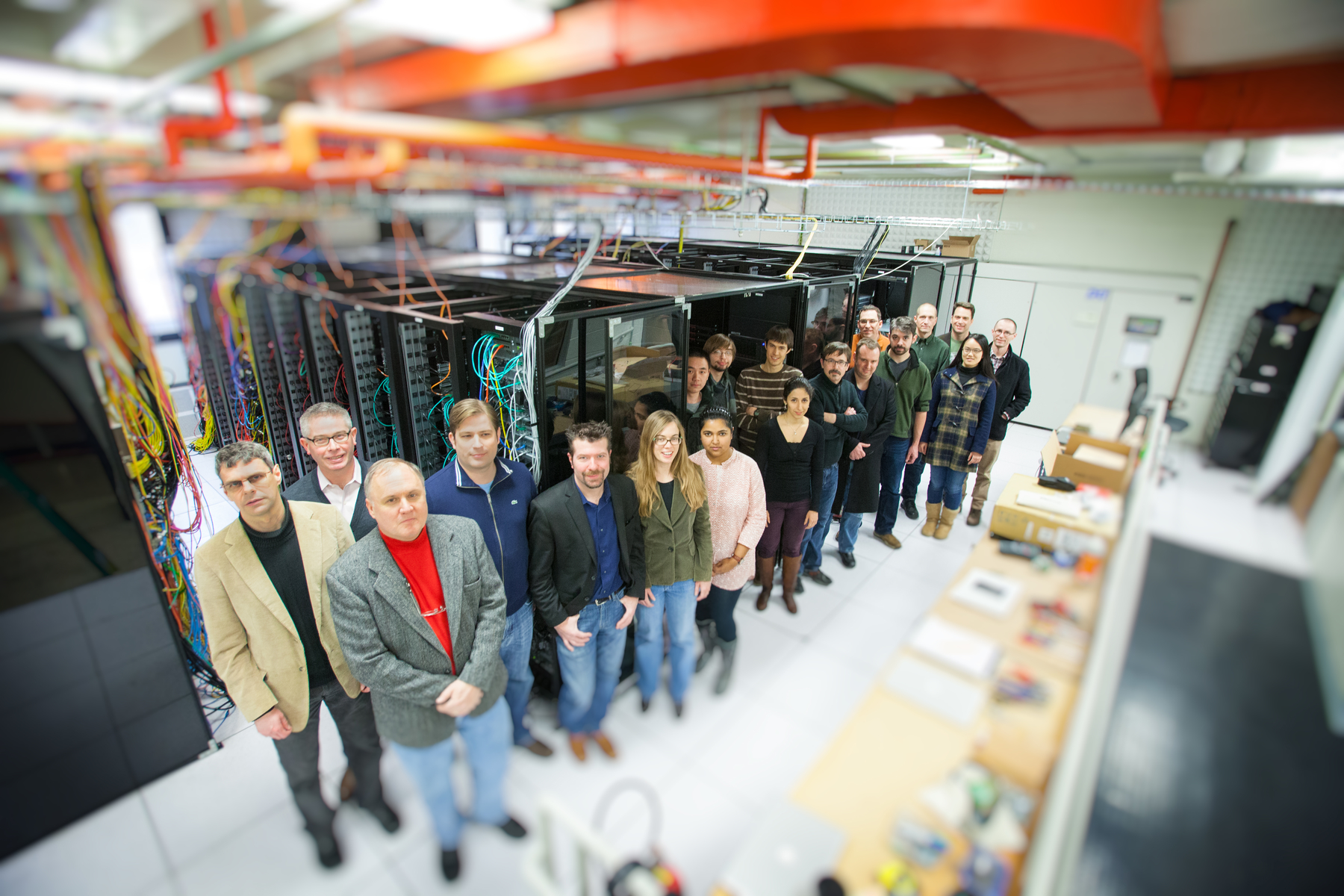OBU Alumnus Helps Make Scientific Breakthrough
March 11, 2016
An OBU alumnus, along with his team, recently made one of the biggest scientific discoveries in years. You might have seen the headline scrolling across the bottom of the screen while watching the news, or popping up while reading your favorite news site. If you’re into scientific research or physics, you heard this news shouted from the mountaintops to the worldwide, scientific community.
Yet, while we were learning (or not) about a breakthrough that we likely didn’t understand, one OBU alumnus was an integral part of the team that made it happen.
Dr. Branson Stephens, associate scientist with the Center for Gravitation, Cosmology, and Astrophysics at the University of Wisconsin-Milwaukee, is part of a research group that supports the LIGO data grid. “LIGO” is short for the Laser Interferometer Gravitational-wave Observatory. On Feb. 11, his team confirmed the observation in 2015 of gravitational waves occurring from the convergence of two distant black holes in space.
That sounds cool, like something out of a sci-fi movie storyline. Yet, the inevitable question comes for those challenged in comprehending astrophysics … “So what?”
Information from the media services team at the University of Wisconsin-Milwaukee states that this breakthrough was the first time scientists have observed ripples in the fabric of spacetime. These ripples, called gravitational waves, “arrived at the earth from a cataclysmic event in the distant universe,” the news release read. “This discovery confirms a major prediction of Albert Einstein’s 1915 general theory of relativity and opens an unprecedented new window onto the cosmos.”
UWM’s media release stated that “Gravitational waves carry information about their dramatic origins and about the nature of gravity that cannot otherwise be obtained. Physicists have concluded that the detected gravitational waves were produced during the final fraction of a second of the merger of two black holes to produce a single, more massive spinning black hole. This collision of two black holes had been predicted but never observed.”
The gravitational waves were detected Sept. 14, 2015, at 5:51 a.m. EDT by both of the twin LIGO detectors, located in Livingston, Louisiana, and Hanford, Washington. The LIGO Observatories are funded by the National Science Foundation, and were conceived, built, and are operated by Caltech and MIT. The discovery was made by the LIGO Scientific Collaboration and the Virgo Collaboration using data from the two LIGO detectors. The 30 members of UWM's LIGO team, to which Stephens belongs, are part of the LIGO Scientific Collaboration, an international consortium of 70 institutions and hundreds of researchers. The UWM group contributed computing power to the search for gravitational waves, along with the analytical tools that identified the detected wave as the product of colliding black holes.
“I think of myself as a ‘data plumber,’” Stephens said. “Most of my work involves developing software tools that enable the discovery of data and the communication of data analysis products. My particular role is part of the larger mission of the LIGO data grid, which is to facilitate the analysis of data coming from the two LIGO instruments.”
Thus, Stephens and his co-workers provided the tools necessary to analyze the data registered on the instruments, the tools which confirmed these detections to in fact be gravitational waves.
“Einstein's theory of relativity imagines gravity as the curvature of spacetime,” he said. “When two strongly gravitating objects orbit each other, such as black holes in this case, the motion creates ripples of curvature that propagate outwards, carrying away energy from the orbiting binary. This gradual loss of energy causes the black holes to spiral in towards each other, until they finally collide and merge into a single larger black hole. The particular collision resulted in waves of curvature that traveled toward the earth over enormous distances, arriving at the two detectors. There, the waves made tiny changes in the distances between the mirrors of an L-shaped laser apparatus. These differences show up as fluctuations in the intensity of the laser light, allowing data analysts to look for the tell-tale signature of a gravitational wave.”
Stephens put the discovery into perspective. “This discovery is the first in an entirely new branch of astronomy, in which gravitational waves, rather than the electromagnetic waves of conventional astronomy, will be used to explore the universe around us. Because this way of doing astronomy is totally new, we are sure to find a lot of surprises in the coming years that may well revolutionize the field.”
Stephens’ love for physics and science was bolstered at OBU.
“I was fascinated by the strangeness of relativity theory even before attending OBU, but it was at OBU that I found out that the ideas were actually within reach for me. Dr. Albert Chen's [professor of physics] mantra was always ‘back to basics.’ In other words, when faced with a difficult physics problem or concept, one should return to the last easily understood aspect of the problem and work one's way up from there. This is actually very empowering advice, since it means that fundamental physics is within reach even for an undergraduate at a small liberal arts college like OBU. All it takes is some good guidance from a patient professor and lots of scratch paper.”
Stephens had an extraordinary journey to OBU, coming to campus at the age of 14 and completing his undergraduate degree at age 18.
“Looking back on it, I'm still amazed OBU was willing to take me on at such a young age,” he said. “I thought my experience was unique in that lots of people from the student body, faculty, and administration really took me under their wing and made me feel welcome. It occurs to me now, though, that all the other OBU students might have felt the same way.”
Chen recalls Stephens’ work ethic and determination. “He always worked hard and was interested in science, and he has good working habits. OBU enhanced and amplified that, offering him opportunity and involvement to grow.”
Chen is himself an accomplished researcher, spending many summers working with NASA, including significant work on Martian dust particles. “We encourage our students to gain research experience in REU … the Research Experience for Undergraduates … sponsored by the National Science Foundation. Branson applied for an internship at the Los Alamos National Laboratory after his sophomore year. That's where he had his first experience in hands-on modeling and simulation, which he now uses in his work with LIGO.”
Chen also put the discovery of gravitational waves and the verification of Einstein’s theory into perspective. “Einstein thought of this and thought we should have this. Now, we have discovered and verified what he said is true. The front end of the scientific discovery was a great human mind. Then, the discovery took so many years because technology has finally caught up with the thoughts of a human being. Also, this technology can be utilized in many other things to understand nature. This is a great discovery.”
Stephens, the son of OBU Professor of Communication Arts Dr. Vickie Ellis, received his bachelor's degree from OBU in physics and mathematics and earned a Ph.D. from the University of Illinois in theoretical astrophysics and numerical relativity. His thesis dealt with simulations of magnetic-field driven phenomena in compact objects. He then worked in the Princeton Center for Theoretical Science, where he collaborated on an evolution code for general relativistic hydrodynamics.
Looking back, he can see how his education on Bison Hill prepared him to be a vital part of such a colossal discovery.
“Studying physics and math at OBU provided an excellent foundation for graduate study in physics,” he said. “So, the path that led to my present career started at OBU. Working one-on-one with Dr. Chen and a small number of other students allowed for a totally immersive way to learn physics. When I first started grad school, I was afraid that I would be behind the other students since I had come from a relatively small school. But it turned out that my preparation was very much on par with that of the rest of my cohort, and I had the additional advantage of a true liberal arts education.”
Stephens did indeed find his path on Bison Hill, coming to campus as a 14-year-old prodigy, leaving as an 18-year-old graduate, and taking the knowledge and confidence gained with him to help unlock the mysteries of the universe.
For more information on the University of Wisconsin-Milwaukee and LIGO’s discovery, visit uwm.edu/news/uwms-big-data-helps-find-gravitational-waves/.

